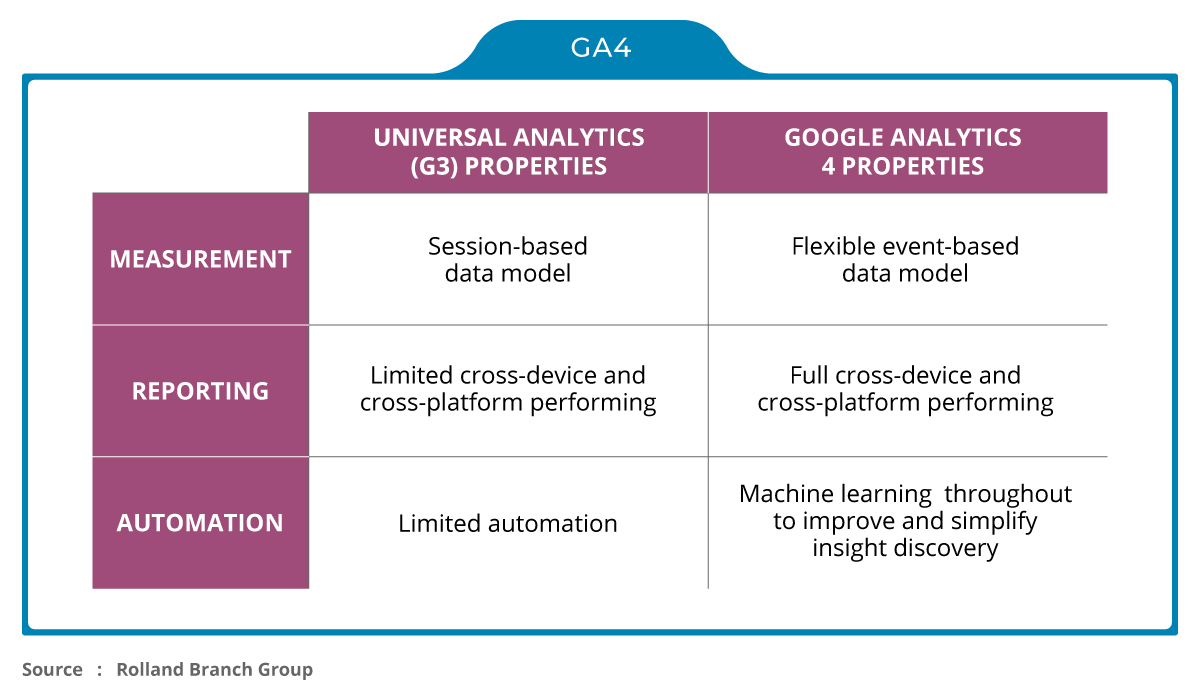
Update Your Google Analytics Now
Most of us are aware that something is going on with Google Analytics. But we sense this is months away, so putting it on the back burner won’t hurt, right?
Not necessarily. If you’re like most wineries, your website has been on Google Analytics for 10+ years, and during all that time, Universal Analytics, or GA3, has faithfully logged your customer activities for free. If you want to continue this level of support from Google, you must get the next version – GA4 – set up as soon as possible. Google will officially stop supporting GA3 on July 1st, 2023.
What is Involved?
Step one: Create a GA4 Property
Google calls a website a “property.” If you have an existing GA3 set up, you have a property that looks like UA-55894432. You will need a new “property” for the new GA4. If you are capable and have the time, you could also complete the data tracking setup. A GA4 Setup Assistant within Google Analytics can assist you with this.
Step Two: Connect your old Universal Analytics to Your New GA4 Property
Once you set up the new GA4 property, you will still collect data through Universal Analytics GA3. If you connect your old property to the new GA4 property, you will now collect data through GA3 and GA4. We recommend running your site with both trackings as soon as possible to highlight and review differences and establish a new baseline. As of July 1st, you won’t be able to compare, and you can’t go back, so this is your time to set expectations of results.
After this, we have added two crucial steps in our process that clients have found helpful.
Step Three: Set up Google Tag Manager
If you still need to set up a Google Tag Manager account, now is the time to do so. If you already have a Google Tag Manager account, gain access and install the new tracking code for your GA4 account.
Step Four: Setup Detailed E-commerce Event Tracking Tags
We can set up technical e-commerce tracking tags in the Google Tag Manager. These tags allow more accurate e-commerce data to flow based on your CRM.

Transitioning Delivers a Significant Upgrade – So Be Happy About This
Although it’s a pain to move from Universal Analytics to GA4, it will be worthwhile. Universal Analytics cannot compare to what GA4 has in store for us. These are the most significant changes:
- Event-based: Universal Analytics is session-based, while GA4 is event-based. The ability to track unique events like button clicks, video plays, page engagements, and more is built-in with GA4. Universal Analytics requires a tedious custom setup. Page views aren’t the sole important metric anymore.
- Cross-device Tracking: Universal Analytics was built for a generation of online measurement anchored in web browsers on the desktop. GA4 gives businesses visibility into their customer journeys across all versions of their websites and apps.
- Machine learning: GA4 includes data-driven attribution and machine learning models to fill measurement gaps and provide custom insights.
- Privacy-friendly: Universal Analytics data relies heavily on cookies; GA4 does not.
GA4 User Interface
Not only does this tool report valuable metrics through consumer behavior on your website, but it will also be able to provide suggestions on how to get more conversions. Over time, it suggests steps based on customer journeys to convert more website visitors. Knowing and understanding at what point your customers are converting is incredibly helpful.
We recommend mapping the purchase funnel, including items viewed, add-to-carts, cart views, and checkouts, then attribute revenue from specific campaigns through reports. When configured, you achieve complete visibility of purchase behavior on your website, and GA4 will be primed to make improvement recommendations in the future through the new machine-learning tools.
With the rate that technology improves and constantly integrates into our daily lives, this is a massive opportunity for businesses that up their game for e-commerce. The amount of data used for improved support and conversions is staggering. (This comes from the perspective that it can help you provide better customer experiences and improve marketing. Not that AI/robots will take over the world soon. We’ve seen the Terminator.)
As the digital landscape in the wine industry changes and it becomes increasingly competitive, GA4 will be your best resource for understanding what your customers want. It is made for the future needs of your business. This tool could be an integral part of taking the wine industry to the next level, and we hope wineries use it to develop better digital marketing strategies.
Wineries on Commerce7 and WineDirect can leave Universal Analytics today and be up and running on GA4 with full e-commerce tracking. Wineries on other platforms can create GA4 properties but cannot completely track e-commerce data yet. Specific data layers must be available in these cases before those wineries can move to GA4.
Still Confused?
We can help with getting everything in place for you. Just contact us to assess your situation and we’ll help set you up.
WineGlass Marketing is located in Napa, California at 707-927-3334 or wineglassmarketing.com


